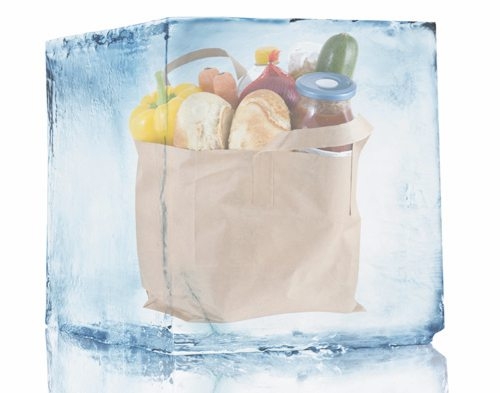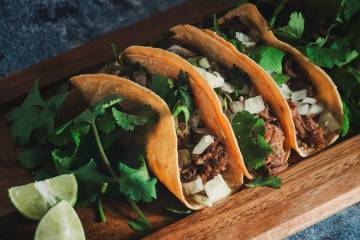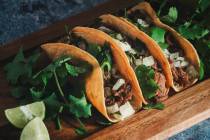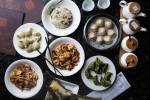Dietitians recommend transporting groceries home on ice
It's hot, hot, hot out; no doubt about that. And you need to eat, which dictates regular supermarket slogs no matter how hellish it is beyond those air-conditioned walls. So here's something -- important -- to remember: While you feel like you're baking, your groceries are doing the same.
Mary Wilson, a registered dietitian and extension nutrition specialist with University of Nevada Cooperative Extension, frequently speaks to community groups to reinforce the concept that groceries and summer heat don't mix. To think otherwise could be deadly -- or at least make you so sick you'd wish you were dead.
"A lot of times what I see with the public is they think foodborne illness and food safety are all about the restaurants," Wilson said. "They think that's when everybody gets sick, but in reality the majority of foodborne illness happens because we mishandle food at home."
That mishandling can come at many points in the food-preparation process, but the first step is to be sure your food gets from store to home safely. Marsha Gilford, vice president of public affairs for Smith's Food & Drug Stores, said it's advisable to shop the cold- and frozen-food aisles last, so the foods are out of their cold environments as briefly as possible. It's also wise, she said, to use insulated lunch bags or larger insulated bags (available at Smith's for $1.99, as well as at other local stores) and to keep a cooler with ice in your car for the journey home.
Wilson said she always carries a cooler with her. She said she uses chemical ice packs but that other options are to freeze water bottles, juice packs or milk (remove some of the milk from the carton to allow expansion). If you get stuck without any of them, she said, one option is to buy a bag of ice in the store.
But you shouldn't be caught out with a cooler and no ice, because you don't want to store a cooler in a hot car anyway. Wilson said that upon taking her cooler out of her garage on a recent morning, "that sucker was hot. I'm not sure that would have been very helpful."
Molly Michelman, a registered dietitian and lecturer in nutrition sciences at the University of Nevada, Las Vegas, said it's smart to make a cooler and cooler packs a summer habit, "just like you would habitually shut the garage door or brush your teeth. Always put the cooler packs -- or a bottle of water, frozen -- away right away when you get home, so hopefully it gets 24 hours or 12 hours of frozen time. You don't want something that's only been in there for a few minutes."
Proportionately, she said, the cooler load should be heavy on ice or ice packs -- 75 percent food to 25 percent ice.
"Don't bother putting nonperishable items in the cooler," she said. "There's no need for it."
Wilson said meat should be placed on the bottom of the cooler, so it doesn't drip onto fresh produce or other foods.
Once you've closed the cooler, Michelman said, don't open it again until you're home and about to move the food to your refrigerator or freezer.
If you plan to stop at the store on the way home from work, she suggested taking the cooler indoors and putting the ice or ice packs in a freezer, if possible.
If you have enough space at home or at work, try putting the whole cooler into the refrigerator or freezer, she said.
All three stressed the importance of keeping cold things cold -- less than 40 degrees, away from the danger zone between 40 and 140 degrees. Food can be safely kept unrefrigerated only for two hours, or one hour if the temperature is 90 degrees or hotter.
And Wilson said to remember that food-safety issues, which are particularly critical in summer, extend past the grocery-transportation process. A refrigerator thermometer is a good idea, she said. When grilling, be sure meats reach the proper temperatures, and don't put cooked meat on the same plate you used to transport raw meat. Also be careful about other sources of cross-contamination in the kitchen.
Because it is, after all, awfully hot out there.
"M&M's," Wilson said, "will melt in your hand in this heat."
Contact reporter Heidi Knapp Rinella at hrinella@reviewjournal.com or 702-383-0474.




























